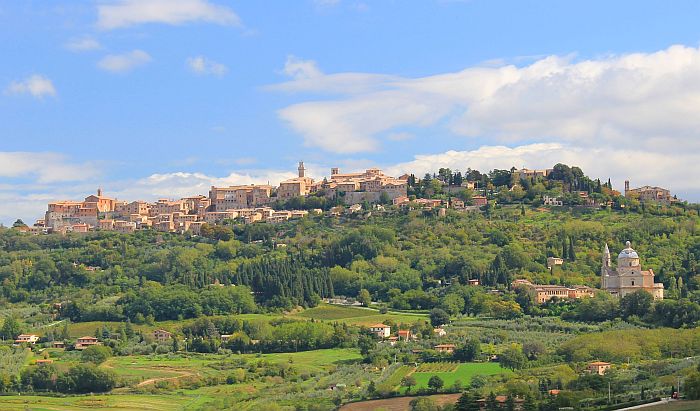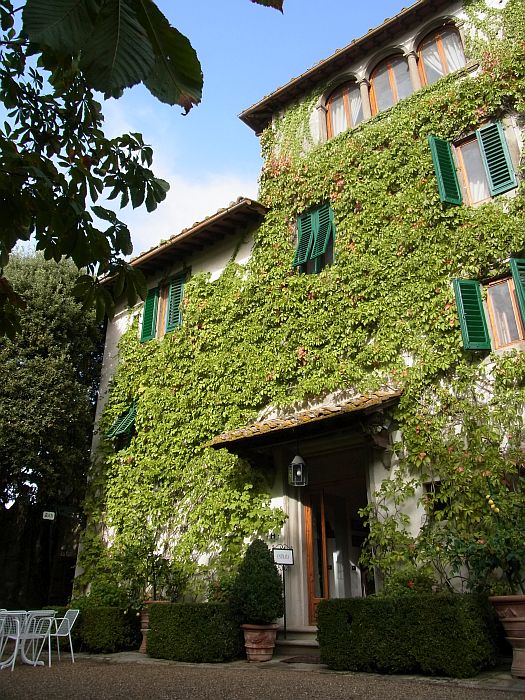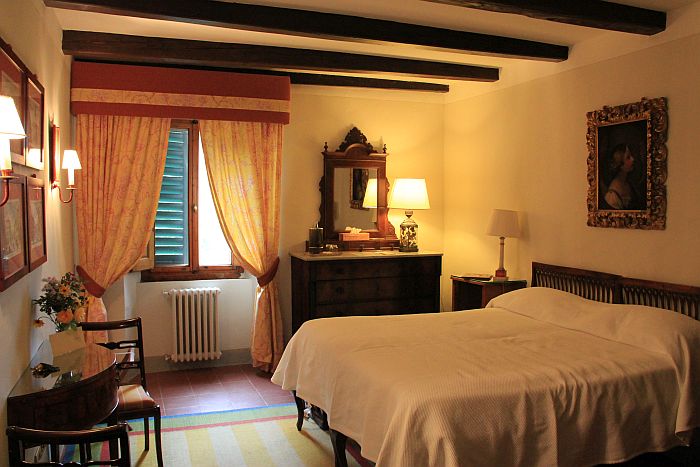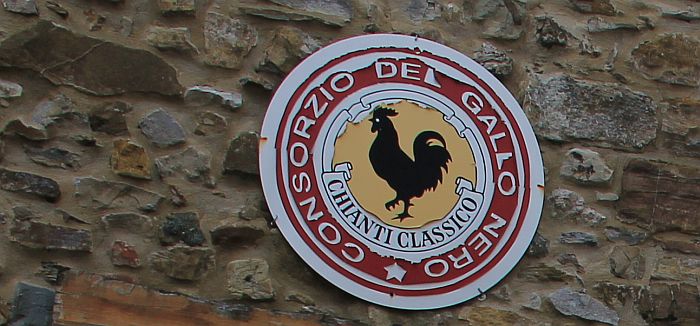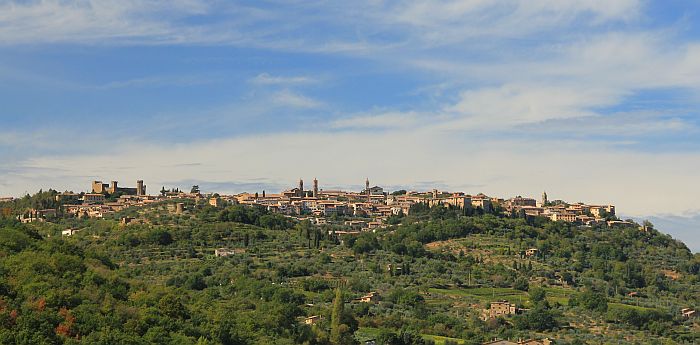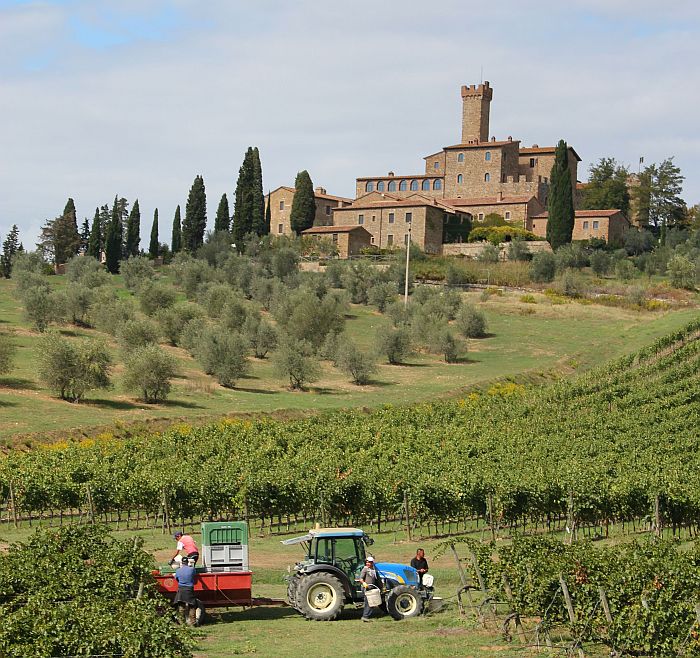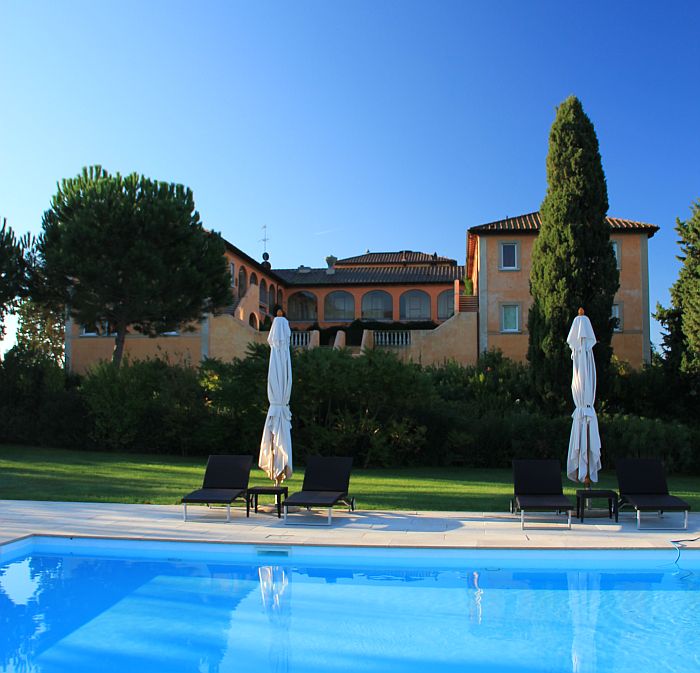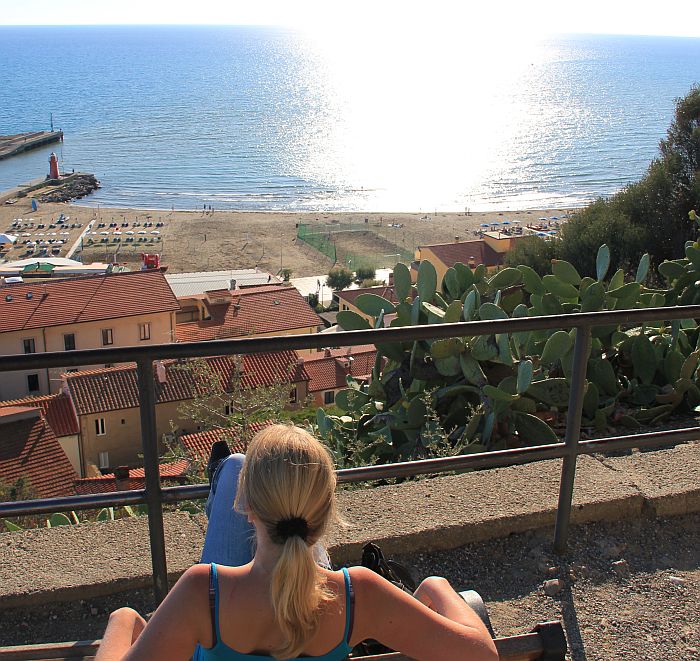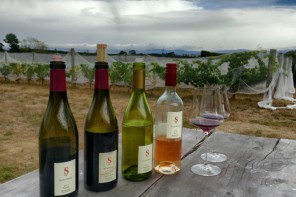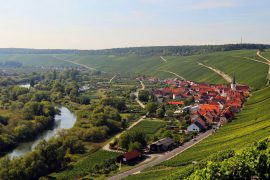Windy roads meander across small hills, cypress avenues lead to terracotta-colored mansions. Vineyards alternate with olive groves, medieval towns and villages perch on the hills. Our wine journey follows the Sangiovese grapes across the Tuscany leads from Pisa to the Chianti, on to Crete and over the Maremma on the Mediterranean coast.
Chianti Classico
Years ago the Chianti Classico was sold in a special carboy, today the wine is one of the best red wines of Italy! It comes from the historical Chianti region between Florence and Siena and for a tasting we set off in the direction of Greve, the capital of Chianti. Our starting point for some trips during the next few days is the historic mansion Villa le Barone near Pinzano in Chianti.
The landlord Count Corso de Larderel is already waving at the archway. His cousin Duchess Franca Visconti, converted the former Fattoria, an Italian farm, into a small hotel with 30 rooms. “In Chianti it’s very cozy and familiar” the earl smiles visibly relaxed and opens the creaking door to our ancient room. After stressful years in Paris, he returned home for his retirement and since then he enjoys the tranquility at the famous wine region
On this sunny afternoon the cook plucks figs and olives in the park for the Primi Piatti. “For the first main course we will trry a glass of Chianti Classico”, the landlord recommends a wine from the bottle with the black cock. The wine consists essentially of Sangiovese grapes, the cock was once the symbol of the Chianti League, an alliance for the administration and defense of the Chianti region.
Top wines: Brunello and Nobile
The next day we drive further south. After a trip to the absolutely picturesque old town of Siena, we reach the region of Crete. We left the forest of the Chianti region behind us and the landscape changes to barren hills with cypress. Here we explore the world-famous wine towns like Montalcino or Montepulciano. We stay in one of the best spa hotels in Italy, the Adler Thermae in Bagno Vignoni. From here the famous wineries are within easy reach.
Montalcino has become famous because of the red wine Brunello di Montalcino. The wine is made only from Sangiovese Grosso, a particular kind of the Sangiovese grape, which is also called Brunello. For the top-quality wine production strictly rules apply and who want to enjoy a glass of the full-bodied, aromatic red wine, has to pay a little more.
On of the best Brunello di Montalcino wines will be served are the famous winery Castello Banfi a few kilometers south of the wine-producing village oft Montalcino. Here you can taste the wines, there is also a small museum devoted to wine. The harvest has just begun and below the castle the first grapes are loaded.
Another top wine comes from Montepulciano, which ist just a few kilometers away: The Vino Nobile di Montepulciano. As the Chianti it is mainly made from Sangiovese grapes.
Tip for connoisseurs: A trip tp Pienza
Pienza was built by Pope Pius II as a model city of the Renaissance, today Italian cafes and small shops offering pecorino sheep’s cheese have opened along the main street. Olive oil, spices for the Tuscan bread soup ribollita or wild boar sausages – gourmets are guaranteed to get their money’s worth.
Wineries at the seaside
Now it’s time to drive to the Mediterranean. Even if the harvesting is already in full swing and the temperature is only 20 degrees, I am looking forward to the beach and we drive to a region called Maremma. From the former swampland there is almost nothing to see. Viticulture and livestock dominate the landscape, green pine trees join the cypress.
In the Maremma we stay at the Hotel L’Andana and turn into the long, straight gravel avenue that from the main road to the five-star hotel. On the right there are Cabernet, Syrah and Merlot, on the left the white Vermentino grapes are growing. After a brief dip in the hotel swimming pool we went over the Tenuta La Badiola next door for some wine tasting.
Elena Antinucci brings the Acquagiusta in white, rosé and red from the cellar of the winery. “It is unusual that a wine is called water,” says the young Italian and serves the farm’s own Vermentino. “The name means ‘Correct water’ and sets itself apart from the inedible swamp water on the other side of the winery from,” she explains.
In the afternoon we finally drive to the sea. The sun is still high in the sky and we enjoy some last rays of sunshine, before heading back to Pisa – of course with a few Tuscan wine bottles in our luggage.

